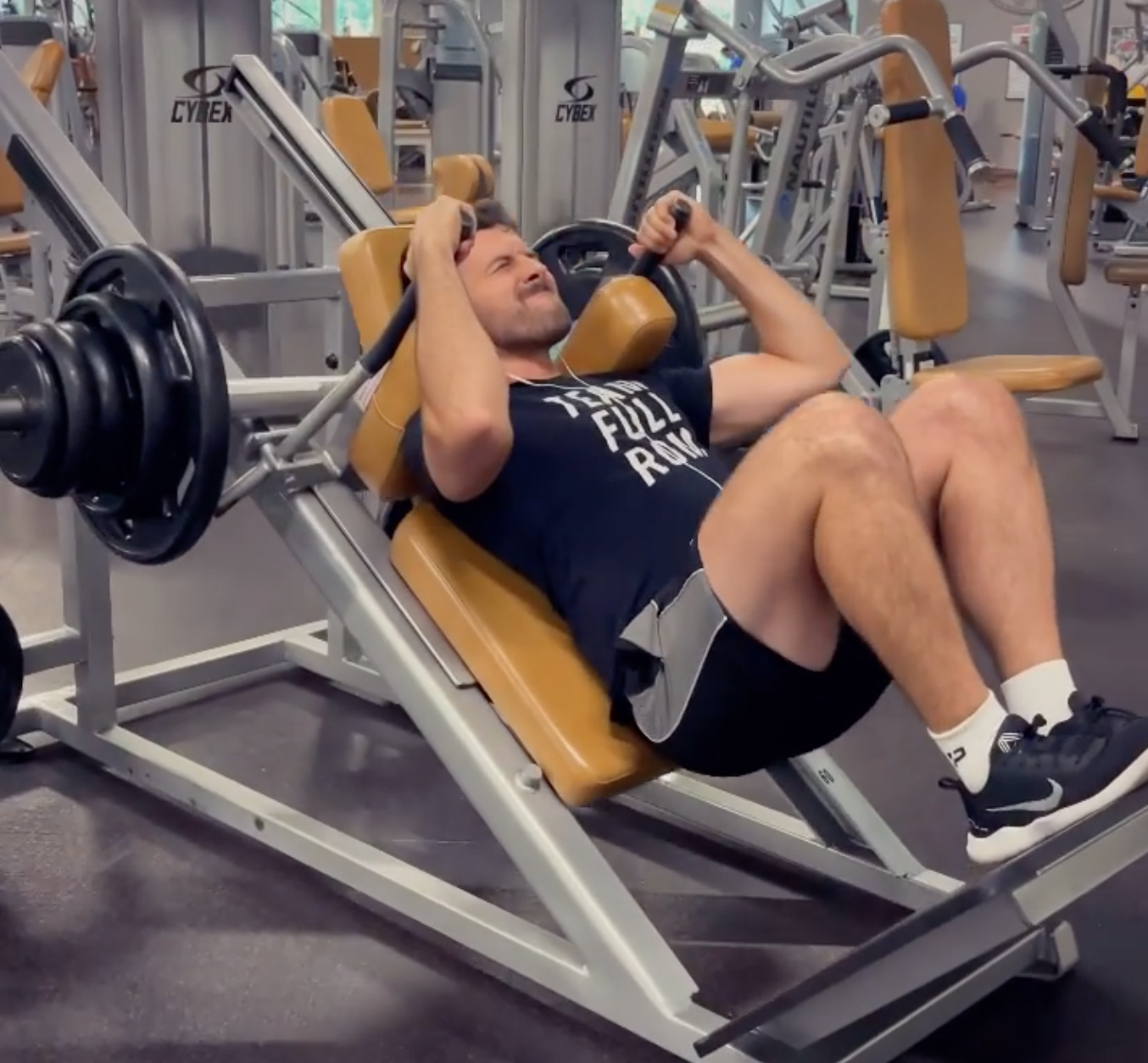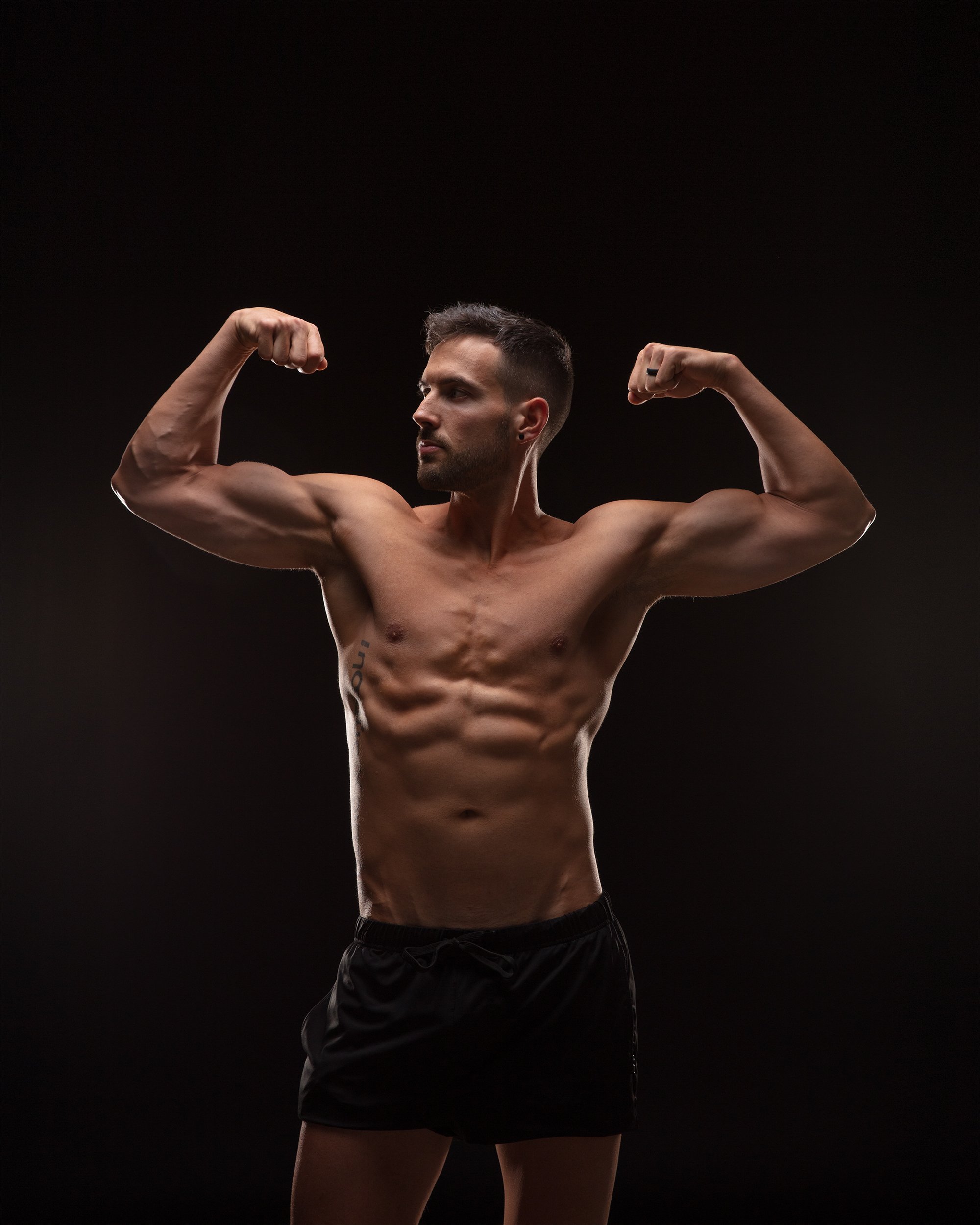Let's talk about how to build a leg workout that actually grows muscle.
Now obviously training and nutrition always go hand in hand, so keep in mind here that we are only talking about the training portion in this article.
But anyway, in my experience, building a good leg workout comes down to a few simple things that we tend to overcomplicate all the time.
6 TIPS FOR BUILDING A GREAT LEG WORKOUT
Determine Your Weekly Sets Target
Distribute Those Sets Across Your Sessions Sensibly
Pick Mostly Compound Movements
Train Relatively Close to Failure
Use Full Range of Motion
Rest Properly Between Sets
Let's break these down one by one in as few words as possible.
1. Determine Your Weekly Sets Target
Most experts in the body recomposition space recommend training most of your major muscle groups with 10-20 hard sets per week.
Unless you already know your own body better from personal experience, I would recommend starting around 10 hard sets per muscle group per week. Why? Because you can always add sets in future weeks if your recovery is awesome and you're confident you could do more.
This means I would dedicate 10 hard sets to your quads and then maybe 5 hard sets each for your hamstrings and glutes since there is inevitably plenty of overlap in terms of how much your quads, hamstrings, and glutes get worked across certain movements.
If you find that you recover on time from session to session and week to week, you can start adding sets for additional weekly volume.
2. Distribute Those Sets Across Your Sessions Sensibly
This just comes down to simple math.
If you've decided you want to train your legs once per week, you would obviously toss all of your leg sets onto your one leg day. This would be most like the traditional “bro split” approach.
For reference, here’s an example of what a brutal 18-set leg day could look like if you were forced to complete all of your leg work in one day.
Seated Leg Curl (3 sets)
Deadlift Pattern of Choice (3 sets)
BB Back Squat (4 sets)
Hack Squats (4 sets)
Leg Extensions (4 sets)
That being said, I personally wouldn’t recommend training your legs only once per week for optimal muscle growth. Can you build a ton of muscle training your legs just once per week? Absolutely. People have been doing it for decades.
I’m just personally biased toward a higher frequency approach, which allows for quicker sessions on fresher legs.
If you're training twice per week, you would probably split them half in half or perhaps have a quad-focused day and a hamstring-focused day.
Or, if you're like me and you want to grow your glutes above all else, feel free to program a glute-focused day for yourself.
And the same concept applies if you are training your legs three times per week as well. You could easily do a quad-focused day, a hamstring-focused day, and a glute-focused day.
When I saw some of my best leg growth, I was doing around 9 sets on Monday, 9 sets on Wednesday, and 9 sets on Friday, but be warned that this was a very high-volume leg program.
You can only run 27 sets of legs per week for short bursts of specialization before you risk injury or overtraining, so be sure to tailor your approach intelligently with your long-term goal in mind.
Let me show you an example I think might be helpful for most people.
One way to spread out your weekly sets on a two-times-per-week training split could look like this:
Two-Times-Per-Week Leg Training Split Example
Monday (Session 1 of 2): Quad-Focused
3 sets of barbell back squats for quads
2 sets of leg press for quads
3 sets of leg curls for hamstrings
Thursday (Session 2 of 2): Glute/Hamstring-Focused
3 sets of barbell step ups for quads and glutes
2 sets of Bulgarian split squats for quads and glutes
2-3 sets of a deadlift variety
3. Pick Mostly Compound Movements
Compound movements generally give you a better bang for your muscle growth buck, which means it takes fewer sets to "get the job done."
Isolation movements like leg extensions and hip abduction machines can be a helpful supplement to your leg training, but I think most of us would agree that the strongest and most shapely legs were probably built with heavy compound moves like squat varieties, deadlift varieties, other hip hinge movements, leg pressing, heavy lunging, etc.
From personal experience, my own legs seem to grow the best in the most favorable proportions (which is important) from lunging, squatting, hamstring curling, and hinging.
4. Train Relatively Close to Failure
Most people in the evidence-based space agree that training within four reps of failure is sufficient for muscle growth.
That's certainly where I tend to "live" in terms of my own proximity to failure (as we like to call it), and it's where I have all of my clients train.
5. Use A Full Range of Motion
Lifting through a full range of motion is going to recruit more muscle fibers than lifting through a partial range of motion, so it makes sense that you might experience better growth while going to full depth.
That means with your squats and lunges, the key is to get deep.
If body recomposition outcomes are your primary emphasis, you want to be jamming as much tension into those targeted leg muscles as possible, which means the deeper you can get with immaculate technique the better.
I when I say deep, I mean all the way down.
You can visit this Instagram post of mine to see what I mean.
6. Rest Properly Between Sets
I think I talk about this more than most because it's really personal to my own physique transformation.
Most people in the gym just simply aren't resting long enough between sets to allow for maximally productive sets.
For compound movements, I recommend resting at least two minutes in between sets. For small muscle groups and isolation movements, I'll take it down to 90 seconds. I only ever take rest times to 60 seconds or below when I'm implementing specific intensity techniques.
Bonus Tip: For whatever reason, my hamstrings seem to respond extremely well to working up to a heavy top set of 8-10 reps on the seated leg curl and then dropping the weight by 20 pounds or so for each set after that while only resting 30 seconds each.
To be clear about what I mean, the last time I did this my numbers were:
125x9 (then rest 30 seconds)
100x12 (then rest 30 seconds)
85x18 (then roll off the machine and curl up into a ball like a small child)
The pump and perceived disruption was gnarly and the work load only took about three minutes once I found my working weight for the 8-10 rep range within a few reps of failure.
Once you've accounted for all six of these tips, the trick is to simply overload these workouts slowly over time through added weight on the bar, more reps, and improved technique!
So there you go - six tips on how to write your own leg workout that actually grows some muscle. Just be sure to eat an adequate amount of protein and to keep your macros in check along the way!
If you’re not sure how to optimize your protein intake, you can read more about that here.
Lastly, just to help anyone out who'd rather just be told what to do, I think the following weekly workout split for getting juicier legs would be a great place for just any beginner to start.
MY SAMPLE WEEKLY LEG ROUTINE FOR MUSCLE GROWTH
Monday (Session 1 of 2)
Squats or Leg Press for 3 sets of 6-10 reps
Bulgarian Split Squats for 2 sets of 8-15 reps/leg
Stiff-Legged Deadlift for 3 sets of 6-10 reps
Thursday (Session 2 of 2)
Reverse Lunges for 3 sets of 8-12 reps/leg
Smith Machine Cannonball Squats for 3 sets of 10-20 reps
Seated Leg Curls for 3 sets of 10-20
You could, of course, do it a million different ways, but I personally like this sequencing.
Enjoy!
I hope you found this helpful!
If you feel like this blog brought you any value at all, consider sending it to a friend or family member - especially someone who might be looking to thicken up their tree trunks.
Later, guys.
-Andrew















